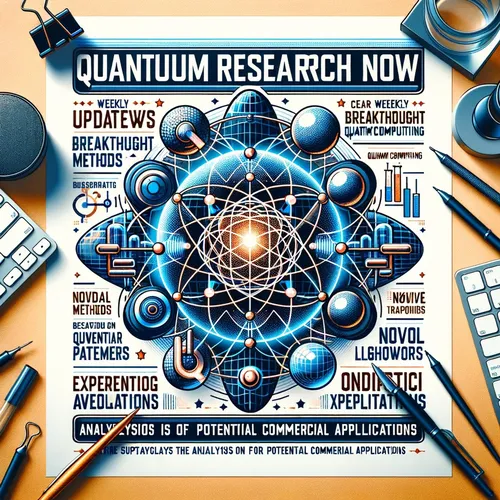Terra Quantum's QMM: The Quantum Tensor Core Accelerating the Future
- Author
- Quiet. Please
- Published
- Fri 15 Aug 2025
- Episode Link
- https://www.spreaker.com/episode/terra-quantum-s-qmm-the-quantum-tensor-core-accelerating-the-future--67378509
This is your Quantum Research Now podcast.
On Quantum Research Now, the headlines today pulse with excitement. It’s Leo, your Learning Enhanced Operator, coming to you from a lively lab in the heart of the quantum revolution—where laser diodes hum, dilution refrigerators whisper, and the future is being calculated in strange, beautiful units of entanglement and superposition.
Today, it’s Terra Quantum that’s electrified the field. Just yesterday, this Swiss company published a breakthrough that could fundamentally change our path to scalable quantum computing. They’ve unveiled the QMM-Enhanced Error Correction layer—a technology inspired by quantum gravity and space-time itself. Picture this: classical computers once sped up thanks to GPUs and AI accelerators; now, Terra Quantum’s QMM layer could play a similar role for quantum processors, acting as a kind of “quantum tensor core.” Imagine you’re driving a car with finicky brakes—until now, quantum computers have been like racing down the Autobahn with wheels wobbling from error. The QMM layer is like an upgrade that makes the ride not just smoother, but faster, safer, and longer-lasting. What’s stunning is that these error corrections work without the costly penalty of extra gate operations or convoluted measurements, validated on real IBM quantum hardware. The next time you take a perfect spiral photo on your phone, think of how AI denoises it without slowing you down. Terra’s QMM does something similar, suppressing quantum “static” while letting your calculations fly.
Florian Neukart, their Chief Product Officer, put it dramatically: “QMM-enhanced error correction works out of the box on existing hardware, requires no architectural changes, and delivers measurable gains. This is a game-changer.” The result? Error rates have dropped by up to 35 percent, a leap that will be felt by every developer, system integrator, and quantum hardware vendor hunting for practical performance.
Why does this matter, beyond labs and newswires? Quantum error correction is the towering challenge standing between dazzling theory and industrial-scale reality. With reliable error suppression like QMM, industries from cryptography to pharmaceuticals, logistics to finance, can begin to harness quantum algorithms that were out of reach only a few months ago. It’s the difference between knowing flight exists and actually building a jet engine that works on a schedule—safely, every time.
This is happening during the United Nations’ International Year of Quantum Science. As quantum impacts medicine, finance, and even secure communications, we see quantum’s “spooky action at a distance” inch ever closer to changing your life in ways as mundane—and as profound—as the rhythms of your morning commute.
The quantum race has entered a new stretch. Today’s announcement tells us that the finish line is no longer theoretical—it’s being redrawn, circuit by circuit, lab by lab.
Thanks for listening to Quantum Research Now. If you have questions or topics you’re burning to hear about, just email me at [email protected]. Don’t forget to subscribe, and remember—this has been a Quiet Please Production. For more information, check out quietplease.ai.
For more http://www.quietplease.ai
Get the best deals https://amzn.to/3ODvOta
